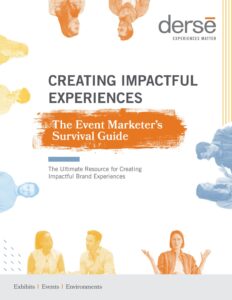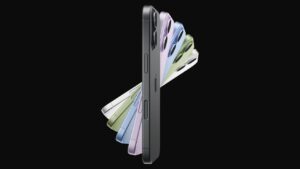Launching a new product sounds exciting, right? But it’s not just about balloons and pretty lights.
It’s about showing the right people why this product matters and making them actually care.
If you’re someone handling the product launch event planning, you already know this isn’t a random party.
It’s the first big impression for a brand. You can’t mess it up.
And yes, it can get stressful quickly; there’s so much to plan: the venue, guests, lights, sound, check-ins, badges… even small mistakes can cause things to fall apart.
So, let’s break it all down in the simplest way possible. If you’re wondering how to plan a product launch event step by step, this blog is for you.
Step 1: Start With “Why Are We Even Doing This?”
Seriously. Before you pick a venue or make an invite list, pause for a second and ask — what’s the point of this launch?
Is it to:
- Get people excited in the media?
- Start getting pre-orders or signups?
- Show the world how cool and innovative the brand is?
- Impress investors or partners?
Once you know the goal, planning the rest becomes way easier. It’s like knowing the destination before you start driving.
Step 2: Figure Out WHO You’re Doing This For
A lot of planners forget this. They plan a huge event but don’t think about who is actually attending.
Ask yourself:
- Are you inviting existing customers?
- New leads or potential buyers?
- Journalists, influencers, or media people?
- Investors or maybe your internal company staff?
Each group wants different things. Media people want something newsworthy. Customers want a cool experience. Investors want results.
You need to plan for all of them without losing the main message.
Also Read: 10 Types of Virtual Events in 2025
Step 3: Make a Timeline You Can Actually Follow
Let’s be real, events that are planned at the last minute? They look like it, too.
So don’t do that. Start at least 6–8 weeks early (more if it’s a big launch).
Make a simple checklist:
- When is the product ready?
- When should invites go out?
- When will you finalize the venue?
- When should event registration go live?
- When will you do rehearsals?
Also, don’t forget what happens after the event, like sending thank you emails, uploading pictures, or sharing media stories.
Step 4: Have a Solid Plan for the Entire Budget, along with a Backup Plan
When you have no limits on budget, it might become a problem. It’s because when you have less budget, you need to plan more smartly, whereas if you have enough budget, then you also need to focus on spending it right. Always remember one thing while event budget planning, either things will look cheap, or you’ll end up spending too much in panic mode. Therefore, to avoid such issues,
Break your budget into simple parts:
- Venue setup + tech setup
- Event’s branding, decoration requirements
- Food and drinks
- Sound, screens, and lighting
- Event registration & ticketing costs
- Set up of badge printing machines
- Security and event staff
- Event marketing things
- Freebies/gifts (if any)
Bonus tip: Always keep a little extra saved for last-minute surprises. It could be anything, but surely always expect that there will be some.
Step 5: Choose a Format That Matches the Product
Every product is different, and the event should feel like it belongs to that product.
Therefore, always ask:
- Is this a luxury or high-end item? Then maybe go for a small, classy launch.
- Is this for the mass market? Do something big and energetic.
Some format ideas:
- Big live event on stage
- Virtual or hybrid (good for a remote audience)
- Demo zones people can explore
- VIP preview for influencers
- Team launch for your sales staff
Also Check: Top 9 Event Management Companies in India
Step 6: Pick the Right Venue
The venue should make your life easier, not harder.
Choose a place that:
- It is easy to reach
- Has parking and safety
- Has strong Wi-Fi (super important for hybrid events)
- Has power backup (you don’t want blackouts)
- Has space for Event Registration, restrooms, and branding
- Comes with helpful on-site staff
Also, think practically. Can the stage setup work here? Is it okay if you hang banners?
Fancy-looking isn’t enough; it needs to work.
Step 7: Don’t Mess Up Registration
The way your event starts matters a lot. If people walk in and see chaos at the gate, the mood is already ruined.
Set up smooth event registration:
- Let people sign up online
- Send automatic confirmation emails
- Remind them before the event
- Use QR-code check-ins, self-kiosks, and facial recognition technology on the day of the event
It makes your event look professional and saves a ton of time.
Check Out: 14 Top Event Ticketing Platforms
Step 8: Take Badge Printing Seriously
Okay, this might sound like a small detail, but it matters! You’ve probably been to an event where your name was scribbled on a sticky note. Awkward, right? That’s why you should use a real event ticketing and badge printing solution provider. Make sure the badges are printed neatly with clear names. You can add a QR code or RFID/NFC chip for quick entry. However, if you want to make it even easier? Use different colored badges for different groups like media, guests, speakers, sponsors, etc. This way you can easily track who showed up and when. Remember, a good badge system means a smooth entry and makes networking so much easier.
Step 9: Build the Program Like a Movie
A launch event should feel like a story, not a boring presentation.
Here’s a sample flow:
- Guests arrive, and casual networking
- Countdown or reveal moment
- Talk from the founder or brand head
- Product demo or showcase
- Testimonials or a quick case study
- Q&A with the media
- Chill time, music, snacks, conversations
Keep every part short and well-timed. Rehearse the full flow so nothing feels awkward or delayed.
Read More: About 15 Simple Event App Engagement Hacks to Make Your Event a Success
Step 10: Make the Brand Feel Real
People may not remember your speech, but they’ll remember how the event felt.
So work on the vibe:
- Use clean branding (not too much)
- Show visuals or short videos about the product
- Share a story, not just features
- Make the product do something, not just sit on a table
- Prepare press kits or brochures (digital is fine too)
Your goal? Let people experience the product, not just see it.
Step 11: Practice, Practice, Practice
This is the big one. Practice like you’re doing a live show! Rehearse the full flow so everyone on your team knows exactly what to do. Make sure to test all the technology the sound, check-in options, the lights, the presentation slides, and at last ensure that there are no glitches. Walk through the space, from the entrance to the main stage, so you know exactly where everything is. The more you practice, the more confident you’ll feel, and the smoother your event will run.
Step 12: Engage Your Audience Before, During, and After
You’re not just inviting people, you’re involving them.
How?
Before the event:
Send teaser videos, countdowns, or a sneak peek of the product.
During the event:
Use live polls, hashtags, photo booths, or mini games.
After the event:
Thank guests, post event highlights, share media mentions, and ask for feedback.
This keeps people connected even after they’ve left.
Also Check: Top 12 Virtual Event Engagement Ideas
Step 13: At the End, Analyze What Worked & Didn’t
Do not feel accomplished when the event’s over; it’s because there are so many things that you should know about the event. Start with, was it worth it?
Ask yourself:
- Did the right people attend?
- What feedback did you get?
- Did people post about it on social media?
- Did you get demo bookings or product signups?
Even if things didn’t go perfectly, learn from them. Your next product launch event planning will be 10x better.
Final Thoughts: Make It a Moment Worth Remembering
At the end of the day, a product launch event is more than just lights, banners, or speeches.
It’s a chance to show people what the brand really stands for. From how the invite looks to how you welcome guests, every little thing sends a message.
So don’t just “put on an event.”
Create a memory. Create a moment. Create belief.
One Last Thing Before You Go…
What’s one thing you can’t afford to mess up in your next launch?
Is it the guest experience?
The tech setup? The way you present the product?
Whatever it is, remember this:
You don’t have to do everything perfectly. You just have to get the important things right.
The post How to Plan a Product Launch Event in 13 Steps Only? (Without Losing Your Mind) appeared first on AAET.






